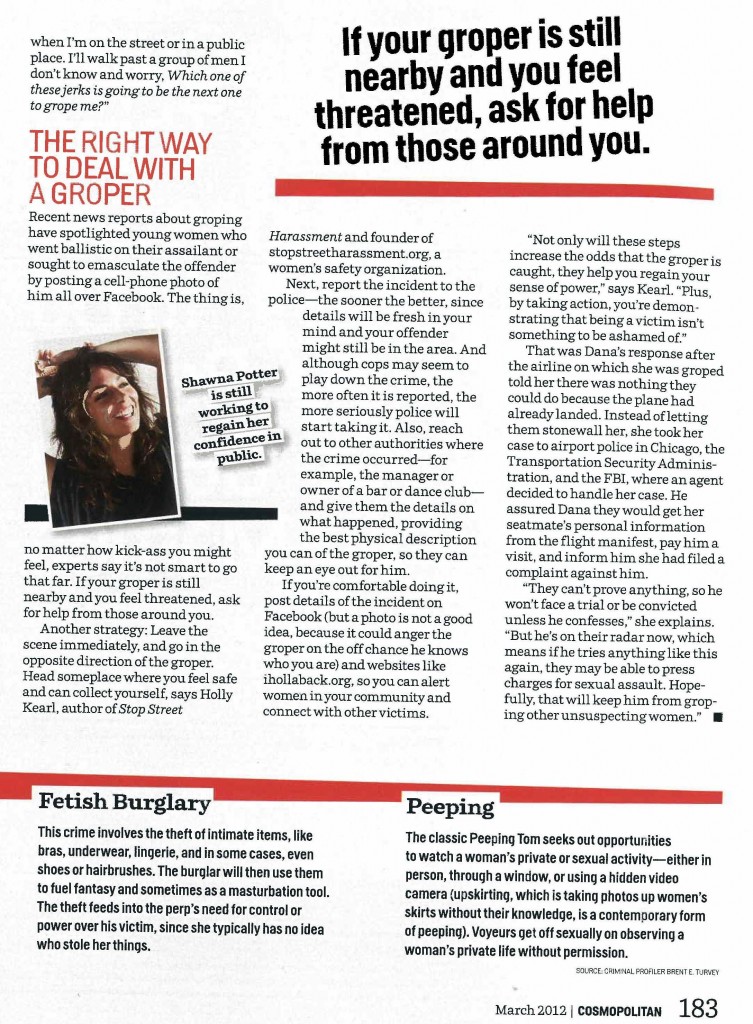Kirstin Kelly, Monterey, California, USA, SSH Blog Correspondent
We cannot stop street harassment from happening unless we understand why people do it in the first place. To this end, I interviewed three mechanics at various stages in life, two of whom my boyfriend has witnessed engaging in street harassment. All three men were more than happy to talk about what I referred to as catcalling (I didn’t want to shut them down by labeling it harassment), but none of them admitted doing it recently. The two my boyfriend had seen admitted to catcalling women when they were younger.
All three men said they thought catcalling was stupid, and none of them were really sure why it happened in the first place. However, they did point out that there were at least two good reasons for it to keep happening: sometimes it is an effective way to pick up women and it makes for a good joke between friends. These two incentives tell us a lot about what we need to do to stop street harassment.
When I asked what they thought we should do to stop street harassment, the men I spoke to said that it was nature, that it’s impossible to prevent that behavior. I disagree. Across all theories of normative psychology, people are only motivated to engage in a given behavior if they believe their behavior will have a favorable impact on the ultimate outcome. In this case, the men either believe they have a chance of successfully getting their target to come home with them or at least getting a good laugh from their friends. This is important because for several of these men, fear of rejection means that street harassment is somewhat safe because it can be played off as a joke should the target not respond favorably. None of the men I interviewed seemed to consider how their behavior made their targets feel unless they got a favorable response.
This is critical- framing street harassment as derogatory, scary, and socially unacceptable is probably the strongest way to change the pervasiveness of the behavior because it would make the perpetrators think about their behavior in a way that may not have before. For victims, it feels like a loss of power, and perhaps that’s why some perpetrators engage in some types of street harassment, but for those that have never thought about that impact of their actions, reframing the conversation may have a significant impact on how willing people are to accept the behavior. The bottom line is that it needs to stop being acceptable fodder for jokes.
The men I talked to also suggested that street harassment is something men grow out of when they get into more serious and committed relationships. There might be something to that, but all three men are in committed relationships, and while they no longer admit to engaging in catcalling, they have been witnessed doing it in the past few months. Their refusal to admit to catcalling women since entering committed relationships is telling. It’s demonstrative of a feeling that street harassment is not acceptable behavior, and that to me suggests social change is possible because the type of change we need is already taking root.
Kirstin is a Master’s Student in Nonproliferation and Terrorism Studies at the Monterey Institute of International Studies and a news editor at the Women’s International Perspective (The WIP). You can follower her on Twitter at @KirstinKelley1, where she regularly posts about human rights issues around the world.

 If you pick up the March 2012 issue of
If you pick up the March 2012 issue of